- Tulip Al Barsha, Office G02, Barsha Rd, Al Barsha 1, Dubai – United Arab Emirates
- +971 56 369 0115
Rats or mice invading your home or business? At UAE Pest Control, we provide comprehensive rodent control solutions that eliminate current infestations and prevent future invasions. With same-day emergency service across Dubai, Ajman, and Sharjah, our certified specialists protect your property, health, and reputation from these destructive, disease-carrying pests.
✓ Complete rodent elimination guaranteed
✓ Safe, humane control methods
✓ Property damage prevention
Don’t let rodents threaten your health and property—book your rodent control service today!
Dubai’s rapid urban development, extensive food service industry, and climate-controlled buildings create perfect conditions for rodent populations to thrive year-round. Unlike many pests that slow during cooler months, rats and mice remain equally active throughout all seasons, seeking food, water, and shelter within residential and commercial properties. The combination of abundant food waste, complex building structures with numerous entry points, and comfortable temperatures makes Dubai properties continually vulnerable to rodent infestation.
Health Alert: Rodents transmit over 35 serious diseases to humans including Leptospirosis, Hantavirus, Salmonellosis, and rat-bite fever. Their droppings, urine, and saliva contaminate food preparation surfaces and stored products. A single rat produces 25,000 droppings annually, creating extensive contamination in infested properties.
Modern Dubai buildings, while architecturally impressive, often feature design elements inadvertently supporting rodent populations. Underground parking garages provide protected highways for rat movement between properties, utility conduits create access routes through multiple floors, and landscaping with dense vegetation offers outdoor harborage adjacent to building entries. Construction and renovation activities disturb established rodent colonies, driving them into adjacent occupied buildings where food and water prove more accessible than construction sites.
Residential communities face persistent rodent pressure from multiple sources. Food waste in garbage collection areas attracts rats and mice, outdoor dining and entertainment areas provide feeding opportunities, pet food left outdoors offers supplementary nutrition, and bird feeders unintentionally support rodent populations. Villa gardens with compost bins, wood piles, and storage sheds become rodent nesting sites, while apartment buildings with shared walls and utility systems allow easy rodent movement between units.
Commercial establishments face catastrophic consequences from rodent infestations. Restaurants can face immediate closure from health department violations, hotels risk reputation destruction from guest encounters with rodents, supermarkets suffer product contamination requiring costly disposal, and warehouses experience inventory damage from rodent gnawing and contamination. The economic impact extends beyond direct pest control costs to include lost business, legal liability, and brand damage that can take years to overcome.
Property damage from rodents goes far beyond the visible. Rats gnaw continuously to control ever-growing incisors, targeting electrical wiring (causing fire risks), plumbing lines (creating water damage), insulation (reducing energy efficiency), structural wood (compromising building integrity), and stored materials including documents, textiles, and personal belongings. Insurance claims for rodent-related fires and water damage cost UAE property owners millions annually.
Our expert rodent control team combines advanced technology, deep understanding of rodent behavior, and proven elimination strategies for complete infestation resolution. We don’t just treat symptoms—we identify and address the root causes creating rodent problems, providing long-term protection through integrated management approaches.v
Home Inspection and Assessment: Comprehensive property evaluations identifying all rodent entry points, harborage areas, food sources, and activity patterns. We examine interior spaces, exterior perimeters, landscaping, and structural elements creating vulnerability.
Interior Rodent Elimination: Strategic placement of advanced trapping systems, rodent bait stations in protected locations, and monitoring devices tracking elimination progress. Safe methods protect children and pets while rapidly reducing rodent populations.
Exterior Perimeter Protection: Comprehensive exclusion work sealing entry points, removal of outdoor harborage sites, landscape management recommendations, and exterior bait stations creating protective barriers around properties.
Attic and Crawl Space Services: Specialized treatments for rodents nesting in insulation and void spaces, including population elimination, dropping removal and sanitation, damaged insulation replacement, and entry point sealing preventing re-infestation.
Villa Garden Management: Outdoor rodent control addressing landscape nesting sites, compost bin management, outdoor storage solutions, and vegetation maintenance reducing rodent attraction and harborage.
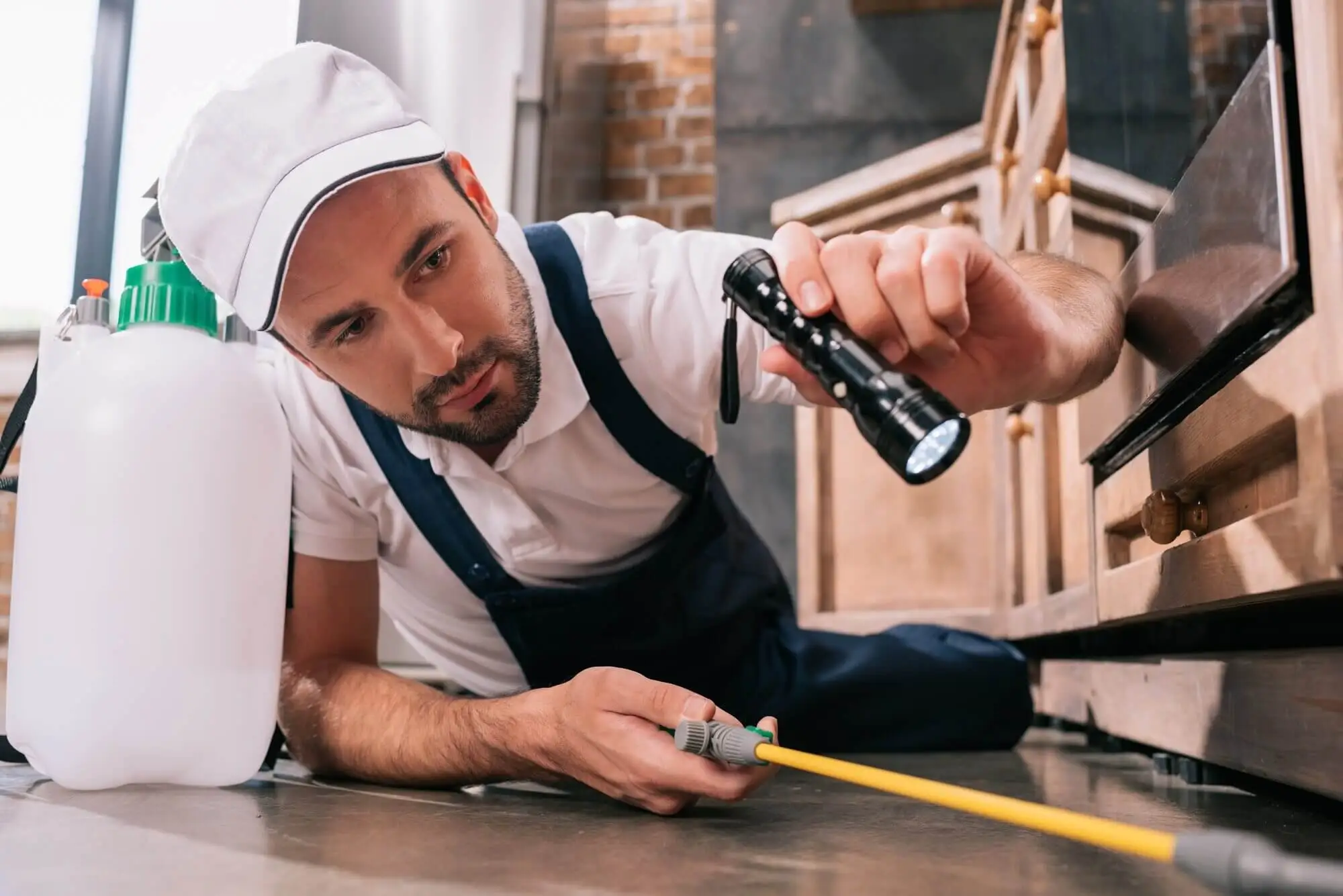
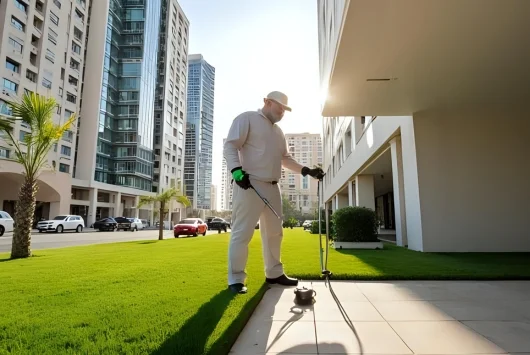
Restaurant and Kitchen Protection: Health code compliant solutions combining intensive monitoring, immediate response protocols, comprehensive sanitation consultations, and documentation for health inspections. Zero-tolerance approaches protecting food safety and business reputation.
Hotel and Hospitality Services: Discreet monitoring and control programs maintaining guest areas rodent-free. Regular inspections, rapid response to any signs, and preventive measures in kitchens, storage areas, laundry facilities, and garbage handling areas.
Warehouse and Distribution Management: Large-scale rodent control for storage facilities, including comprehensive perimeter protection, interior monitoring grids, loading dock management, and inventory protection protocols preventing product contamination.
Supermarket and Retail Services: Integrated programs protecting food products and merchandise through strategic monitoring, night-time inspection protocols, receiving area security, and stockroom protection preventing rodent access to retail inventory.
Office Building Solutions: Common area and tenant space protection addressing pantries, break rooms, garbage chutes, parking garages, and building mechanical spaces where rodents often establish populations affecting multiple tenants.
Exclusion and Proofing Services: Comprehensive structural modifications permanently preventing rodent entry. We seal gaps as small as 6mm (mice can squeeze through spaces this size), install exclusion materials in critical areas, address utility penetrations, and protect building envelope weak points.
Sanitation and Cleanup: Professional services for properties with heavy rodent activity, including dropping removal and sanitation, contaminated insulation disposal, odor elimination treatments, and disinfection of affected areas meeting health standards.
Integrated Pest Management: Long-term programs combining monitoring, exclusion, sanitation, and targeted treatments. Emphasizes prevention over reaction, reducing long-term control costs while maintaining rodent-free environments.
Emergency Rapid Response: Same-day service for urgent situations including sudden infestations, health inspection requirements, important events requiring immediate property protection, and situations where rodent activity threatens business operations.

Understanding rodent behavior proves essential for effective control. Rats and mice are primarily nocturnal, conducting most foraging and exploration during darkness when human activity decreases. This nocturnal habit means severe infestations may exist with occupants rarely seeing rodents, though other signs like droppings, gnaw marks, and sounds reveal their presence.
Rodents follow established routes between nesting and feeding areas, creating visible runways along walls, in grass, and through insulation. They deposit urine continuously while traveling, creating pheromone trails other rodents follow. These trails appear as dark, greasy marks along walls and surfaces where rats repeatedly travel.
Neophobia, or fear of new objects, characterizes rat behavior. They avoid unfamiliar items in their territory for days or weeks, making instant trap success unlikely. Successful rodent control requires understanding these behavioral patterns, pre-baiting traps to establish trust, and strategic placement along established runways.
Mice, conversely, demonstrate curiosity about new objects, readily investigating traps and bait stations, leading to faster control compared to rats. However, their small size and high reproduction rates mean populations recover quickly without comprehensive elimination and exclusion efforts.
Norway Rats (Rattus norvegicus), also called brown rats or sewer rats, represent Dubai’s most common rat species. These large, heavy-bodied rodents reach 20-25cm body length plus tails, weighing 350-500 grams. They prefer ground-level environments, commonly infesting basements, ground floors, gardens, and sewage systems. Excellent swimmers, Norway rats access buildings through toilets and drainage pipes.
Norway rats live in hierarchical colonies ranging 15-220 individuals, establishing complex burrow systems in gardens, beneath slabs, and along foundations. Highly territorial, they defend feeding areas aggressively. Each female produces 4-6 litters yearly with 7-8 pups per litter, meaning small infestations explode to major problems within months without intervention.
Roof Rats (Rattus rattus), or black rats, feature sleeker bodies than Norway rats, reaching 16-20cm with tails longer than their bodies. Excellent climbers, they infest upper building levels, attics, false ceilings, and palm trees common in Dubai landscaping. Their droppings appear smaller and more pointed than Norway rat droppings, helping identify species during inspections.
Roof rats prefer elevated locations, traveling along utility wires, tree branches, and building ledges to access properties. In multi-story buildings, they commonly inhabit ceiling voids, moving between apartments through utility chases. Less social than Norway rats, they establish smaller colonies but cause equivalent damage through gnawing and contamination.
House Mice (Mus musculus) stand as Dubai’s most common residential rodent. These small rodents reach only 7-10cm body length, weighing 12-30 grams. Their small size allows entry through gaps as tiny as 6mm—about pencil width. Mice thrive in wall voids, cabinets, appliances, and cluttered storage areas, often going unnoticed until populations grow substantial.
Mice reproduce even more prolifically than rats, with females producing 5-10 litters yearly averaging 5-6 pups. One breeding pair can produce 200 descendants in four months under ideal conditions. Their rapid reproduction makes early intervention critical—what begins as a few mice quickly becomes a major infestation.
Field Mice occasionally invade Dubai properties from agricultural areas and desert fringes, particularly during extreme weather or when natural habitats face disturbance. While less common in urban centers, properties near green belts and agricultural zones may experience field mouse intrusions.
Dubai’s consistent climate means rodents remain active year-round without winter dormancy reducing populations. However, seasonal patterns still exist. Summer heat drives more rodents indoors seeking air-conditioned comfort and reliable water sources. Indoor infestations often intensify during June through September as outdoor conditions become less hospitable.
Cooler months from November through March bring increased outdoor rodent activity and breeding. Comfortable temperatures allow expanded foraging ranges and optimal reproductive conditions. This period often reveals infestations as increased rodent activity makes them more visible.
Construction activity throughout the year disturbs established rodent populations, forcing them into adjacent properties. If construction occurs near your property, increased rodent pressure may follow as displaced populations seek new territories.
Effective rodent control begins with comprehensive property inspections by certified technicians trained in rodent biology and behavior. Our inspectors identify species present through dropping analysis, track signs, and behavior evidence, locate entry points including gaps, cracks, utility penetrations, and damaged screens, find nesting areas through activity signs and careful exploration, assess food and water sources attracting and sustaining rodent populations, and evaluate property features creating rodent harborage.
Advanced inspection tools include endoscopes for examining wall voids and tight spaces, moisture meters detecting water sources attracting rodents, thermal imaging cameras revealing rodent activity patterns in walls and ceilings, and UV lights showing urine trails invisible to naked eyes.
Detailed inspection reports document all findings with photography, mark entry points and activity areas on property diagrams, explain severity levels and infestation extent, and provide customized treatment recommendations with timeline expectations.
Strategic Trapping Systems: Professional-grade snap traps, multiple-catch traps, and glue boards placed strategically along rodent runways and near entry points. We use dozens of traps in initial treatments creating rapid population reduction. Trap placement follows rodent behavioral patterns, maximizing catch rates while ensuring safety.
Pre-baiting establishes trust with neophobic rats before setting traps. Once rodents regularly feed from pre-baited locations, we activate traps for maximum effectiveness. This methodical approach proves more successful than randomly placed traps that rodents avoid.
Professional Rodenticide Programs: Advanced rodent baits using multiple active ingredients and formulations target different species and feeding preferences. We utilize tamper-resistant bait stations meeting UAE safety requirements, protecting children, pets, and non-target animals while providing rodents secure feeding locations.
Modern rodenticides include anticoagulants preventing blood clotting, leading to humane death over several days. Delayed action allows rodents to feed multiple times before effects occur, prevents bait shyness, and enables secondary poisoning of entire colonies as treated rodents return to nests.
Bait station placement focuses on active areas identified during inspection—along walls, near entry points, in attics and crawl spaces, around exterior perimeters, and in landscape areas with rodent burrows. Regular monitoring and bait replenishment ensures continuous availability until populations eliminate.
Exclusion and Sealing Services: Permanent rodent prevention through comprehensive structural modifications. We seal gaps around utility pipes, install door sweeps and weather stripping, screen vents and air bricks, seal foundation cracks and gaps, repair damaged screens and vents, and install steel wool and mesh in large openings preventing rodent entry.
Exclusion materials include copper mesh that rodents cannot chew, expandable foam combined with wire mesh, concrete for large foundation gaps, sheet metal for protecting wood structures, and specialized exclusion materials designed for specific applications.
Sanitation and Harborage Removal: Eliminating factors supporting rodent populations proves as important as direct control. Recommendations include proper food storage practices, garbage management improvements, removal of outdoor harborage including wood piles and dense vegetation, addressing water sources like leaking pipes and standing water, and decluttering interior spaces reducing nesting opportunities.
Monitoring Systems: Electronic monitoring devices tracking rodent activity in real-time, allowing rapid response when activity detected. Particularly valuable in commercial facilities requiring documentation for health inspections and quality control.

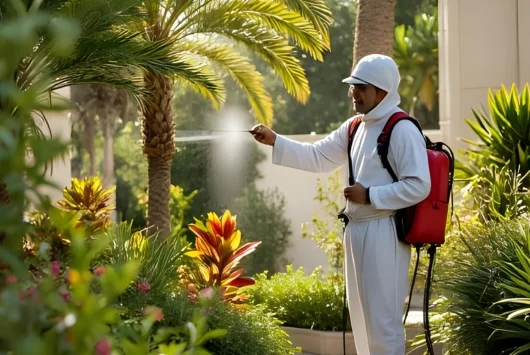
For clients prioritizing non-toxic approaches, we offer comprehensive exclusion-focused programs emphasizing sealing entry points, removing attractants, and using physical capture methods without rodenticides. Live traps allow catch-and-release, though this approach suits limited situations given rodent homing abilities and population pressures.
Electronic deterrents including ultrasonic devices provide supplementary protection in combination with other methods. While not effective as standalone solutions, they complement comprehensive programs in specific situations.
Natural deterrents like peppermint oil and predator scents offer mild repellent effects but cannot eliminate established infestations. We incorporate these methods in integrated programs where clients request minimized chemical usage.
Full regulatory compliance with all treatments meeting UAE safety and efficacy standards. Certified technicians with specialized rodent control training ensure professional service quality.
Deep understanding of rodent biology, social structures, and behavioral patterns determines treatment success. Continuous training keeps our team current with latest control technologies and strategies.
Professional-grade trapping systems, bait stations, exclusion materials, and monitoring equipment deliver superior results unavailable through DIY approaches.
Complete warranty coverage with unlimited follow-up visits if rodents return within guarantee period. We continue treatments at no additional charge until your property remains rodent-free.
Urgent rodent problems receive immediate attention with technicians available 24/7 for emergency response. Critical situations get priority scheduling.
Beyond eliminating current infestations, we prevent future rodent damage through comprehensive exclusion and ongoing monitoring programs protecting property value.
Service in Arabic, English, Hindi, and Urdu ensures clear communication throughout treatment processes, with teams understanding Dubai’s diverse community needs.
Rodent prevention begins with eliminating food sources. Store all food including pet food in sealed containers rodents cannot chew. Clean up spills immediately, sweep floors daily removing crumbs, manage garbage in sealed bins emptied regularly, and don’t leave dirty dishes overnight.
Commercial kitchens require particular vigilance—clean behind appliances regularly, ensure floor drains remain clear and sealed, store ingredients on shelves rather than floors, and implement strict closing procedures ensuring no food remains accessible overnight.
Physical barriers provide permanent rodent prevention. Inspect your property monthly for gaps and cracks, especially around utility entries. Seal any openings larger than 6mm—mice can squeeze through surprisingly small gaps. Pay attention to areas where different building materials meet, as these expansion joints often create rodent entry points.
Maintain door sweeps and weather stripping around all exterior doors. Install screens on vents and air bricks. Repair damaged window screens immediately. Keep garage doors closed when not in use, as they represent common rodent entry points.
Address moisture issues attracting rodents. Fix leaking pipes, ensure proper drainage around foundations, repair water-damaged wood, and maintain air conditioning condensate systems preventing water accumulation.
Outdoor rodent control requires yard maintenance reducing harborage near buildings. Keep vegetation trimmed at least 30cm from foundations. Remove landscape debris, stored wood, and unnecessary materials providing nesting sites. Trim tree branches away from roofs preventing roof rat access.
Manage composting carefully using sealed containers rather than open piles. Store firewood elevated off the ground and away from buildings. Keep grass short and remove dense ground cover adjacent to structures.
Bird feeding attracts rodents through spilled seed. If you feed birds, use platforms catching fallen seed and clean areas regularly. Consider discontinuing feeding if rodent problems persist.
Rodents pose serious health risks through disease transmission. Leptospirosis spreads through contact with water or soil contaminated with infected rodent urine, causing flu-like symptoms that can progress to kidney and liver failure without treatment. Dubai’s humid areas and water features create conditions supporting leptospirosis transmission.
Hantavirus transmits through inhalation of dust contaminated with rodent droppings, urine, or saliva. While rare in the UAE, cases occur periodically, causing severe respiratory illness with high mortality rates if untreated.
Salmonellosis spreads when rodents contaminate food or preparation surfaces with bacteria from their droppings. Symptoms include severe diarrhea, fever, and abdominal cramps requiring medical treatment.
Rat-bite fever occurs through bites or scratches from infected rodents or consuming contaminated food. Symptoms include fever, vomiting, muscle pain, and joint swelling. Untreated cases can lead to serious complications.
Plague, while rare, still exists in rodent populations worldwide. The UAE’s position as global trade hub creates theoretical risks of introduction through imported rodents.
Beyond direct disease transmission, rodents carry parasites including fleas, mites, and ticks that can infest properties and transmit additional diseases to humans and pets.
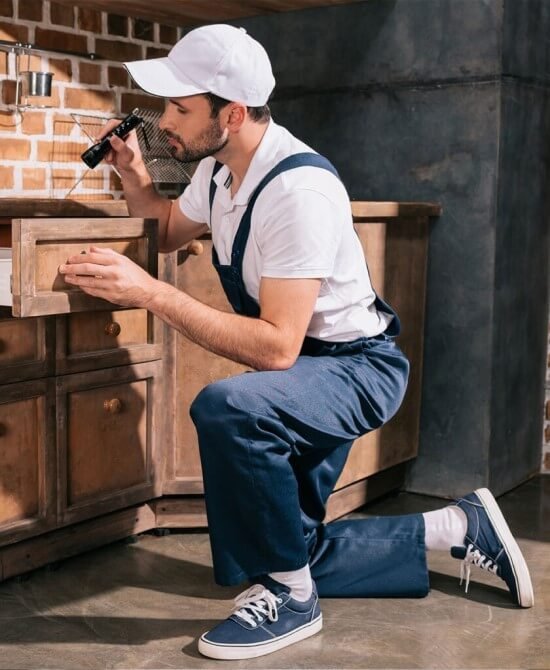

Commercial food establishments face closure from rodent-related health code violations. Visible rodent droppings, gnaw marks on food packaging, evidence of rodent nesting, and actual rodent sightings all constitute major violations resulting in immediate closure orders.
The economic impact extends beyond closure costs to include disposed contaminated inventory, complete facility sanitation requirements, potential legal liability if customers suffer illness, and reputation damage affecting long-term business viability.
Rodent gnawing creates serious property damage and safety hazards. They continuously gnaw maintaining ever-growing incisors, targeting electrical wiring (causing fire risks documented in thousands of insurance claims annually), PVC plumbing pipes (creating water damage), insulation (reducing energy efficiency and creating nesting materials), structural wood (compromising building integrity), and valuable stored items.
Electrical fires from rodent-gnawed wiring represent particular danger. Exposed wires can short circuit or arc, igniting surrounding materials. Many unexplained fires trace back to rodent damage discovered during investigation.
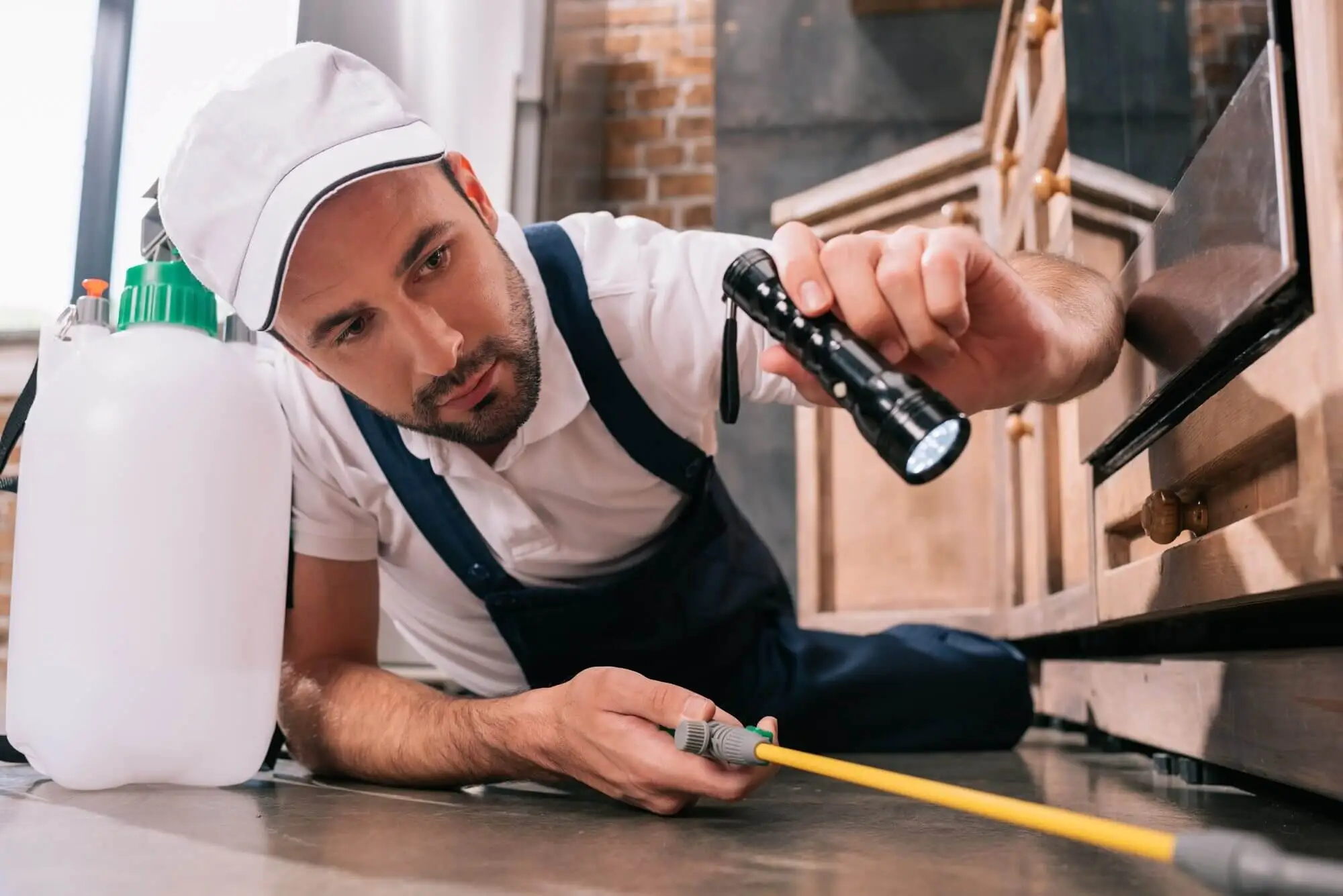
Your rodent control journey begins with detailed phone consultation discussing specific rodent problems, property characteristics, and urgency levels. We schedule inspections at convenient times and provide immediate advice for temporary relief while awaiting professional treatment.
Certified technicians conduct thorough property evaluations typically requiring 45-90 minutes depending on property size and complexity. Inspection includes complete interior assessment of all rooms, storage areas, attics, and crawl spaces, exterior evaluation examining foundations, entry points, landscaping, and outdoor harborage, identification of rodent species through dropping analysis and activity evidence, and assessment of infestation severity and duration.
Detailed findings reports with photography explain rodent species identified, estimated population size, entry points and access routes, structural conditions contributing to infestations, food and water sources supporting populations, and recommended treatment approaches with timeline expectations.
Specific preparation instructions ensure treatment effectiveness and family safety. Requirements typically include securing food items in sealed containers, removing clutter from treatment areas providing access, temporarily relocating pets from treatment zones, and clearing areas beneath sinks and appliances for inspection and treatment.
Kitchen preparation involves emptying cabinets where bait stations will be placed, removing items from under sinks for pipe penetration sealing, and temporarily relocating small appliances for thorough treatment access.
Professional rodent treatments typically require 2-4 hours for residential properties, longer for commercial facilities or severe infestations. Our technicians arrive with all necessary equipment including traps, bait stations, exclusion materials, application tools, and safety equipment.
Treatment protocols combine multiple approaches: strategic trap placement throughout active areas, installation of tamper-resistant bait stations in key locations, sealing of identified entry points using appropriate materials, application of tracking powder in void spaces revealing rodent movement, and sanitation recommendations for reducing attractants.
Exterior perimeter treatments create protective barriers preventing outdoor rodent populations from accessing buildings. We place exterior bait stations, seal exterior entry points, remove harborage near foundations, and treat landscape areas with rodent activity.
Detailed post-treatment instructions ensure optimal results. Rodent elimination occurs gradually over 1-3 weeks depending on population size and treatment methods. Avoid disturbing bait stations and traps, continue basic sanitation practices, report any rodent activity to allow rapid response, and watch for signs that eliminated rodents may have died in wall voids.
Follow-up inspections scheduled 1-2 weeks post-treatment assess elimination progress, replenish bait stations if needed, adjust trap placements based on activity, perform additional exclusion if gaps discovered, and verify control success.
Most programs require 2-3 follow-up visits ensuring complete elimination. Our guarantee covers unlimited visits if rodents return within the guarantee period, providing additional treatments at no charge until properties remain rodent-free.
After elimination, we recommend ongoing monitoring programs, especially for commercial properties and homes with previous infestations. Quarterly inspections identify new rodent pressure before populations establish, maintain exclusion work as properties settle, and ensure continued rodent-free conditions.


More than 75 trained & certified professionals